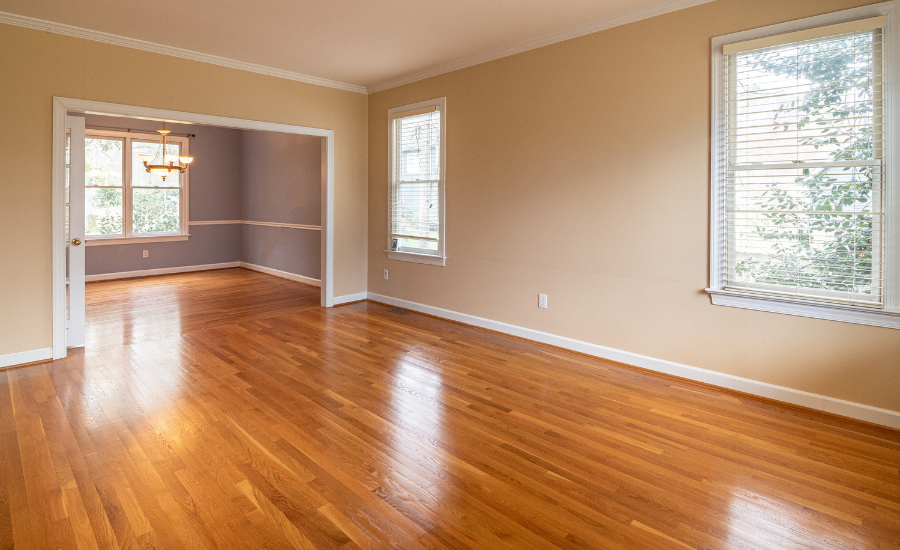When you’re designing or renovating your home, flooring is one of the most impactful choices you’ll make. It sets the tone for your interiors, influences comfort and maintenance, and even affects your property’s value. Among the most popular options today are vinyl and wooden flooring — both beautiful, durable, and practical in their own ways. But which one suits your home and budget best? Let’s explore the key differences to help you decide.
A Quick Overview
Vinyl flooring is a synthetic option made from layers of PVC, designed to replicate the look of natural materials such as wood, stone, or tile. It comes in sheets, tiles, or luxury planks (known as LVT or LVP). Vinyl is loved for its affordability, resilience, and moisture resistance.
Wooden flooring, on the other hand, comes in two main forms: solid hardwood (made from single pieces of timber) and engineered wood (featuring a real wood surface layer bonded over plywood or high-density fiberboard). Wood floors are prized for their warmth, authenticity, and timeless beauty.
Cost and Installation
If you’re working within a budget, vinyl flooring is the more economical choice. It’s not only cheaper to buy but also easier and faster to install — often as a DIY project using click-lock or peel-and-stick systems. This reduces labor costs significantly.
Wooden flooring, particularly solid hardwood, requires professional installation and subfloor preparation, which adds to the cost. However, engineered wood is a middle-ground option — slightly more affordable than solid wood, with easier installation methods like floating floors.
If upfront cost is your primary concern, vinyl gives you more design flexibility for less money.
Durability and Lifespan
Vinyl flooring has evolved dramatically in recent years. High-quality LVT and LVP options are extremely durable, scratch-resistant, and even waterproof — perfect for areas like kitchens, bathrooms, or basements. Most good vinyl floors last between 10 to 20 years with proper care.
Wooden flooring, on the other hand, is built for longevity. While it’s more vulnerable to scratches and moisture, it can be sanded and refinished multiple times. A well-maintained hardwood floor can last 50 years or more, making it a long-term investment rather than a short-term upgrade.
So, vinyl wins for durability in wet or high-traffic areas, while wood excels in overall lifespan and repairability.
Maintenance and Care
One of vinyl’s strongest selling points is its low maintenance. Regular sweeping and occasional mopping are all it needs to stay in top shape. There’s no need for refinishing or special cleaners, making it ideal for busy households or families with pets and children.
Wood, though, demands a bit more attention. You’ll need to watch out for water spills, humidity levels, and scratches from furniture. Periodic refinishing or polishing keeps it looking new but adds to long-term upkeep costs.
If you prefer a “fit-and-forget” flooring option, vinyl takes the lead. If you enjoy the charm of natural wood and don’t mind the maintenance, wood remains unbeatable in character.
Aesthetic and Feel
In terms of appearance, both materials offer stunning options. Vinyl can mimic nearly any wood grain or texture with remarkable realism, including oak, walnut, and maple. However, no matter how advanced printing gets, it can’t fully replicate the natural depth, grain, and warmth of real wood.
Wooden flooring instantly elevates any interior with its authenticity. It ages gracefully, developing a patina that adds character over time. It also feels warmer and more tactile underfoot — something vinyl can only approximate.
So, if realism and budget are your goals, choose vinyl. If you value authenticity and natural beauty, go with wood.
Moisture and Environment
When it comes to moisture resistance, vinyl flooring is the clear winner. It’s waterproof and doesn’t warp or swell, making it perfect for areas like kitchens, bathrooms, and basements. Wooden flooring, especially solid hardwood, is more sensitive to water and humidity. Engineered wood performs better in such conditions but still requires care.
From an environmental standpoint, wood is the more natural and renewable choice — provided it’s sourced responsibly. Vinyl, while improving in eco-friendly manufacturing, remains a synthetic product that’s harder to recycle.
Resale Value and Prestige
If you’re thinking about future resale value, wood flooring often adds more to your property’s worth. Homebuyers perceive it as a premium upgrade and are often willing to pay more for genuine hardwood. Vinyl, even luxury versions, typically doesn’t carry the same prestige, though it can still make your home look elegant and modern.
Making the Right Choice
Ultimately, your decision should depend on your budget, lifestyle, and space:
- Choose vinyl flooring if you need an affordable, water-resistant, low-maintenance solution that offers design versatility.
- Choose wooden flooring if you want timeless elegance, long-term value, and a premium feel — and are willing to invest in care and maintenance.
Conclusion
Both vinyl and wooden flooring can transform your home beautifully, but they serve different priorities. Vinyl offers practicality and savings without sacrificing style, while wood represents tradition, luxury, and durability. The best choice depends on what matters most to you — cost or character, convenience or craftsmanship.
Whichever you pick, the right flooring can truly redefine how your home looks, feels, and lives — under every step you take.


